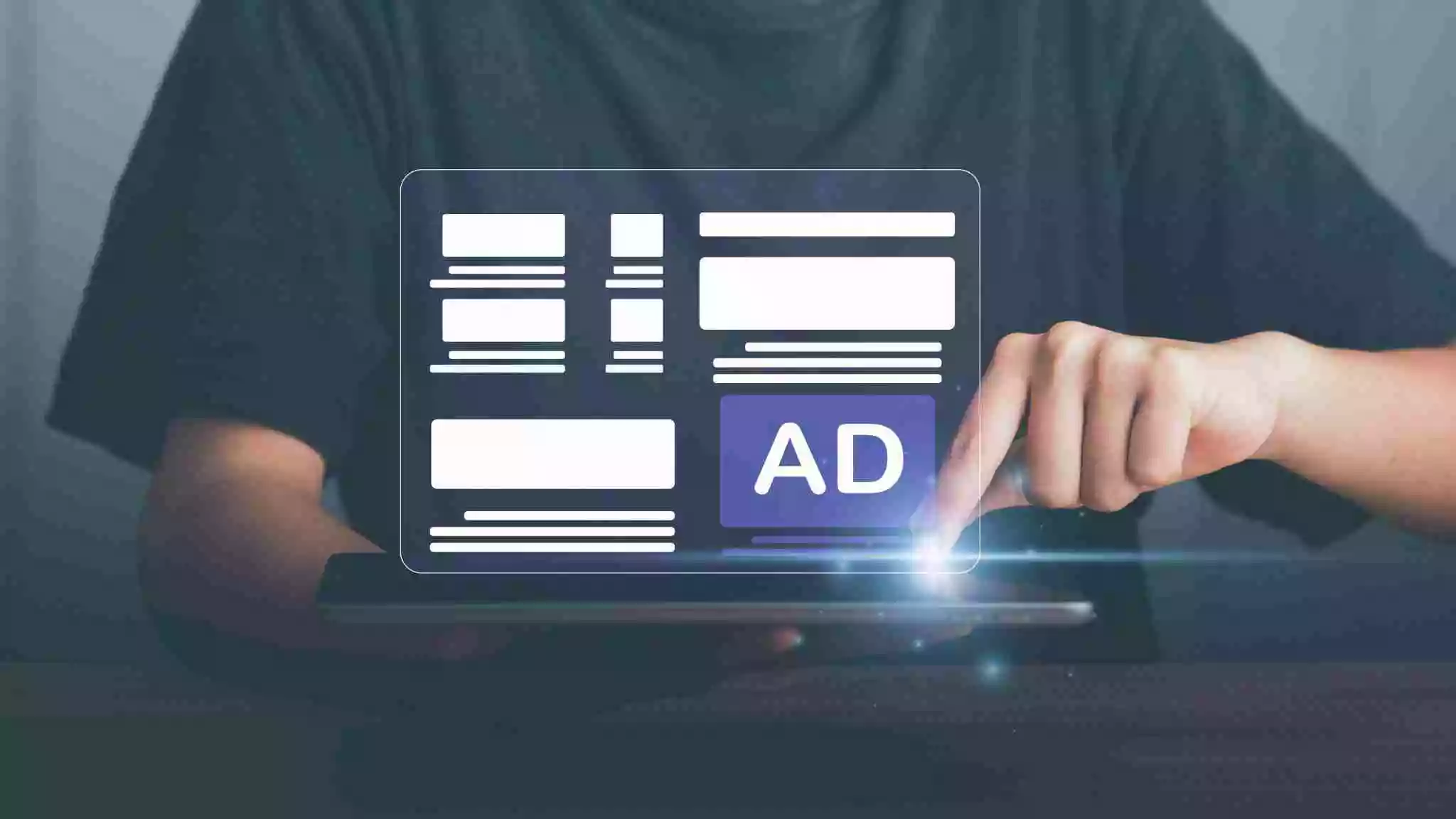Welcome to the world of programmatic advertising – a revolutionary technology that has transformed the digital advertising industry. With global programmatic ad spending projected to reach an astonishing 557.56 billion dollars in 2023 and soar to $724.84 billion by 2026, understanding and leveraging this game-changing technology has become more critical.
Picture the old days when ad-buying was a tedious, manual process, and inefficiencies were the norm. Those days are long gone! Thanks to programmatic advertising that has injected speed, transparency, and control into the advertising mix.
You might think, “that sounds great, but how does it all work?” So, grab a seat and prepare for an exciting ride as we dive into programmatic advertising in detail in this blog.
Table of Contents
- What Is Programmatic Advertising?
- Who Uses Programmatic Advertising?
- Why Programmatic Advertising?
- Programmatic Advertising Platforms
- How Does Programmatic Advertising Work?
- How Do Marketers Buy and Sell? Auction Types of Programmatic Advertising
- Types of Programmatic Ads
- Why Is Programmatic Advertising Important for Publishers?
- Why Is Programmatic Advertising Important for Advertisers?
- What Are the Challenges in Programmatic Advertising?
- Digital Advertising Vs. Programmatic Advertising
- What Is the Difference Between Programmatic and Display Ads?
- Success Stories of Programmatic Advertising
- How Much Does Programmatic Advertising Cost?
- Emerging Trends: What’s Next in Programmatic Advertising?
- Power Your Programmatic Journey With Us
What Is Programmatic Advertising?
Programmatic advertising is the automated buying and selling of digital ad spaces in real-time using data and technology. It revitalized the process of traditional media buying with a data-driven approach to help website owners and brands show ads in front of the right user on the right platform and time.
Programmatic advertising uses different software and algorithms to improve ad performance, viewability, addressability, revenue, demand, and ROI for publishers and advertisers.
Who Uses Programmatic Advertising?
Publishers and advertisers are the two vital players in programmatic advertising- in other words, those who use programmatic advertising.
Publishers are website or app owners who sell digital ad space on their websites or apps. Advertisers are businesses/brands that want to buy and serve ads in that space to spread the brand information across channels.
Between the publisher and advertiser, programmatic platforms play a major role in connecting the ad space with potential advertisers by taking advantage of automation and various programmatic deal types. We will see those programmatic platforms and deal types later in this blog.
With the collection and use of data like browsing history, demographics, online behavior, etc., programmatic advertising enables the two players to reach targeted audiences and deliver personalized ads.
So when you visit a website and see an ad for an item you were searching for on the internet, as soon as the page loads, that’s my friend is programmatic advertising.
Why Programmatic Advertising?
Because it is a significant shift that changed how things were done traditionally, manual media buying is usually done for hours ineffectively and brought fewer bucks for publishers.
Programmatic advertising allows you to monetize the premium and remnant inventories with different approaches and deal types.
Every process in the programmatic ecosystem is data-driven and marches towards high demands, getting high CPMs, placing highly addressable ads, and getting high yields.
In short, programmatic advertising is an astonishing evolution in adtech that saves time and increases efficiency and revenue with high-end automation potential.
Programmatic Advertising Platforms
In programmatic advertising, several components work together to facilitate the automated buying and selling of digital ad space. Here’s an overview of the key elements within this ecosystem:
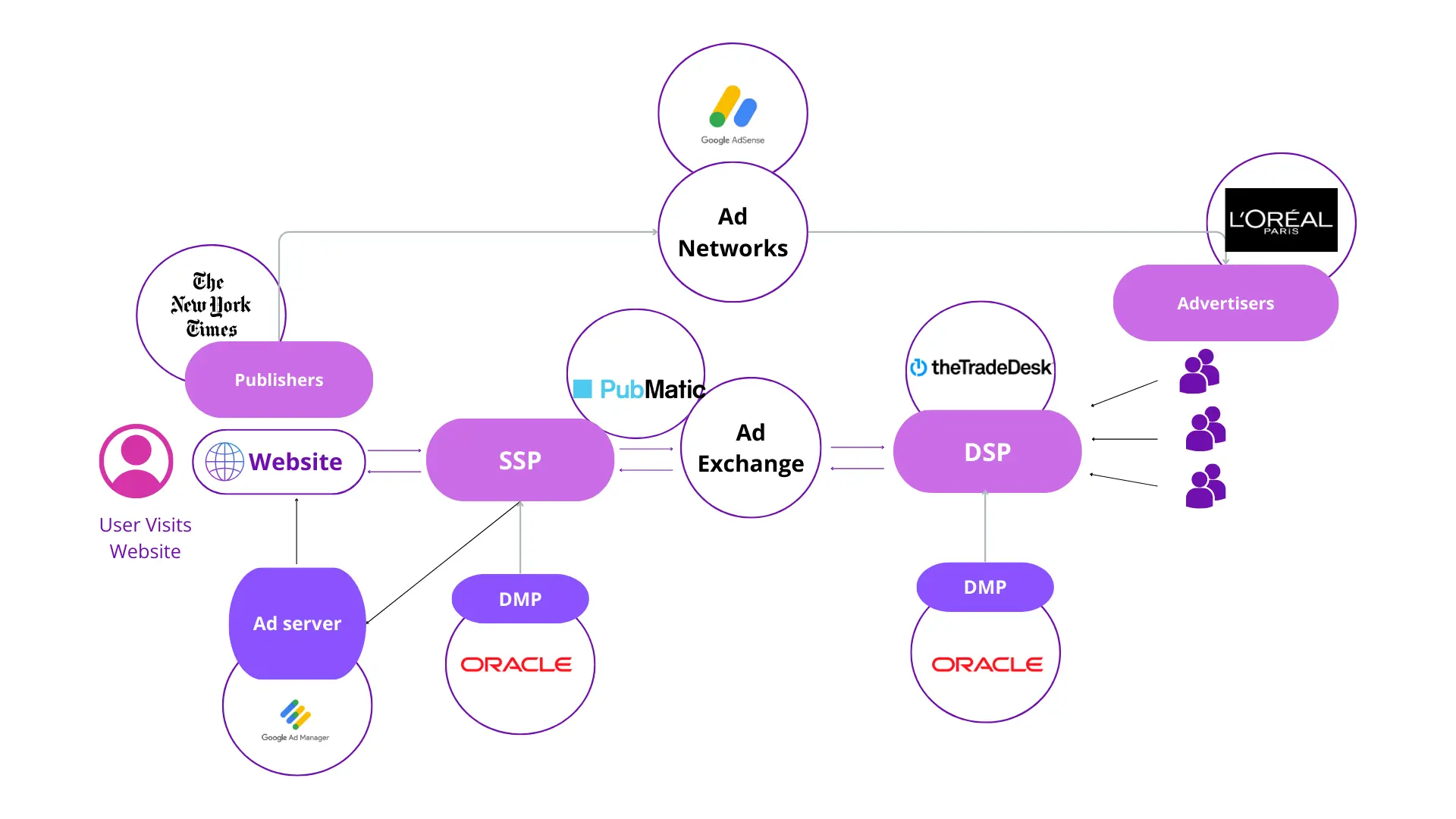
Publishers: Publishers are website owners or content creators who offer ad space on their platforms to generate revenue.
Supply-Side Platforms (SSPs): SSPs help publishers manage and sell their ad inventory for high CPMs on ad exchanges. They optimize the selling process by allowing publishers to set minimum price thresholds and control the ad placement process.
Advertisers: Businesses or individuals looking to promote their products or services through online advertising.
Demand-Side Platforms (DSPs): Advertisers use DSPs to purchase ad inventory across multiple ad exchanges and publishers. DSP helps advertisers find the highly valued ad space at a low CPM.
Ad Exchanges: Ad exchanges are digital marketplaces that facilitate the buying and selling of ad inventory between advertisers (via DSPs) and publishers (via SSPs). They use real-time bidding (RTB) technology to auction ad impressions.
Note: These days, the line between SSP and Ad exchanges is blurring. Few SSPs are now even buying ad exchanges to offer comprehensive solutions. The standalone SSPs are getting less by every minute.
Ad Network: The ad network acts as an intermediary between advertisers and publishers that aggregates ad inventory from multiple publishers and resells it to advertisers at the maximum price. They help fill unsold inventory and can provide additional targeting options.
Note: The publisher uses ad networks and exchanges simultaneously to monetize their ad space. Using only one way, like an ad exchange or ad network, will not guarantee a 100% fill rate.
Related read: Ad Networks Vs Ad Exchanges – What You Should Know.
Ad server: The purpose of the ad server is to serve ads on the website or an app after selecting the highest bid and track the performance of those ads. It is the civic center for managing ad campaigns, tracking ad performance and reporting output.
Data Management Platforms (DMPs): The platform that serves as a source of data for publishers and advertisers is DMP. They collect first, second, and third-party data and list wholesome user details to concerned parties for detailed targeting.
Programmatic platform examples

How Does Programmatic Advertising Work?
As a publisher, understanding how programmatic advertising works can help you optimize your ad inventory and maximize your revenue. Here’s how the process works:
1. Ad request initiation
- The user enters the website or an app, and it starts loading
- Once the website or app loads, the header bidding wrapper sends requests to SSPs connected with each ad unit.
- As a publisher, you have listed your ad inventory in an SSP.
- Advertisers use a DSP to bid on your ad inventory through an ad exchange.
2. Auction happens
- Ad exchanges facilitate the auction through real-time bidding.
- Advertisers bid on your inventory equal to or above the floor price you set.
- Ad exchanges send the received bid to the ad server.
3. Ad serving
- The ad server compares the bid received and chooses the highest bid that matches the required line items.
4. Ad performance tracking
- Ad exchanges and networks track the performance of ads, like clicks, impressions, and conversion rates.
- Keep the data for future campaigns for setting floor prices and engage in powerful negotiations in direct deals.

The entire process is automated and occurs in milliseconds, allowing for a more efficient and targeted way to buy and sell ad inventory.
How Do Marketers Buy and Sell? Auction Types of Programmatic Advertising
Several types of programmatic advertising cater to publishers’ and advertisers’ different needs and preferences. Here’s an overview of the main types:
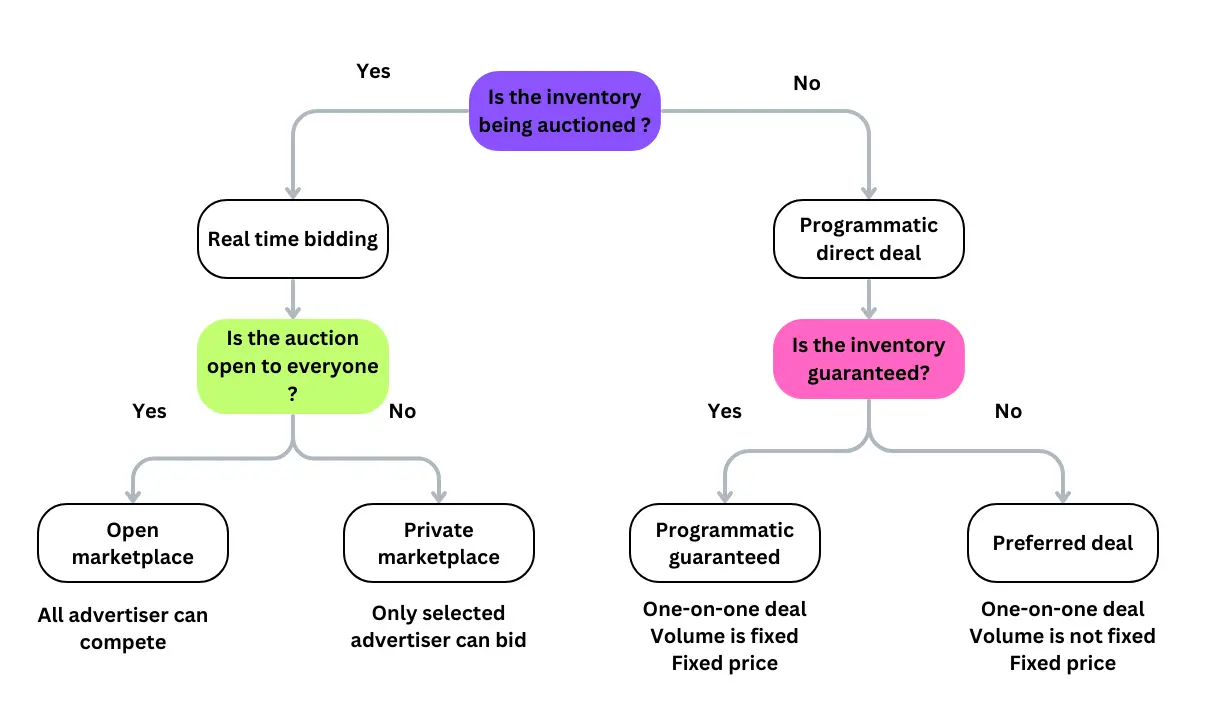
Real-time bidding: As the name suggests, the bidding happens in real-time. The auction starts once the user loads the page, and the advertiser bids on the available impressions. The highest bid wins, and its respective creative will be served on the website or app. The process takes only milliseconds.
Open marketplace: An open marketplace lets every advertiser in the network bid on the ad space in real-time bidding.
Private marketplace (PMP): PMPs are invite-only marketplaces where selected advertisers can only bid on your ad inventory. It is again a form of real-time bidding with selected advertisers.
Header bidding: Header Bidding(HB) is an effective programmatic approach under real-time bidding. It calls all the demand partners at once and conducts the auction, unlike the waterfall approach, which calls the demand one after the other. HB’s approach intensifies the competition and gets the highest CPM for the ad space.
Related read: What is Header Bidding and How Does It Work?
Programmatic guaranteed: Programmatic direct, or programmatic guaranteed, is a direct deal that allows publishers and advertisers to agree on a fixed price for ad inventory in advance. This direct deal type will not come under real-time bidding but still leverages programmatic platform automation and targeting capabilities.
Preferred deals: Programmatic non-guaranteed or preferred deals are where publishers sell ad space to preferred advertisers at pre-fixed CPM. The advertiser and publisher are not obliged to buy and sell the ad space after negotiation because the volume is not fixed.
Note: Although the processes mentioned above are different, the most important point to note here is that whether you sold the inventory directly or auctioned it off, the ad is served programmatically only. That’s why the name – programmatic advertising.
Types of Programmatic Ads
Display ads: Display ads are banner ads in different sizes, typically rectangular or square. They do not gel with the content, and you will see them on your website’s header, footer, or side of the content.
Native ads: Native ads blend with surrounding content, unlike display ads. These ads are less intrusive and come in different forms, like sponsored articles and product recommendations.
Video ads: As the name says, the ads with video content are the most engaging. They either stick to the left or right side of the website or play in-stream with video content.
Social ads: Social ads are social media ads you can see on top social networks like Facebook, Instagram, Twitter, etc. These ads are highly targeted with the valuable data collected from the user while signing up with the network and browsing behavior.
Audio ads: Audio ads are placed within the audio content, such as podcasts and online radio. Publishers have started adopting it with the increasing popularity of podcasts, and different audio ad formats have evolved with programmatic audio advertising.
Why Is Programmatic Advertising Important for Publishers?
If you want a one-line answer, then programmatic advertising is your key to ad revenue and higher yield. The high ad revenue and yield can be achieved with the following benefits.
Cost-effective and simple: Programmatic advertising automates media buying, which is cost-effective and simple. You can effectively allocate resources and save operational costs.
Improved addressability: Programmatic is highly targeted and data-driven, allowing you to show your users relevant ads. You can even personalize it to give a personal touch.
High demand and flexibility: Programmatic gives you the flexibility to choose different types of deals like RTB, PMP, and header bidding. It simultaneously opens your ad space to multiple demands, increases competition, and gets high CPMs.
Real-time tracking and optimization: Programmatic advertising platforms provide real-time insights and analytics to optimize your ad inventory and strategies on the fly.
High revenue: As programmatic advertising delivers highly relevant and targeted ads, it contributes to a better user experience on your website or app. It makes you reach your highest possible revenue and gets a high yield.
Why Is Programmatic Advertising Important for Advertisers?
Before programmatic, advertisers have a hard time reaching potential ad spaces. Automated media buying solved this problem with easy access to publishers and high-level targeting.
Scalability: Through programmatic, advertisers can put ads in a space that makes them reach a global scale.
Flexibility: Advertisers can make real-time adjustments to their ad creatives based on the impressions received. Also, they get the benefit of accessing a broad range of targeting.
Optimal budget spend: Through programmatic, advertisers can effectively allocate the ad budget and spend on the ad space that gives them high impressions and clicks.
High ROI: The programmatic process is more streamlined, which gives advertisers access to a large pool of publishers, potential matching, and conversions. Ultimately, the higher return on investment.
What Are the Challenges in Programmatic Advertising?
Even though the programmatic automates the media buying process and increases overall efficiency, it also has challenges that every marketer should handle carefully.
Complex ecosystem: The programmatic platform between the publishers and advertisers is too complex. It is difficult for publishers and advertisers to check the flow of how their ad inventory is auctioned and how their ad budget is spent.
Ad fraud and inventory quality: Publishers are matched with advertisers in milliseconds. A complex intermediate system matches the publishers with demands that give poor-quality ad creatives and redirections to harmful websites. At the same time, advertisers get matched with poor-quality inventories that create fake impressions with bots.
Lack of transparency: Too many layers between publishers and advertisers make it difficult to understand how much the marketers are really earning. They have less control and understanding over the process even though the reporting is done after the auction.

Hence, due to these challenges, 23% of marketers are planning to get an in-house team for them in 2024. 2.95% of marketers prefer an in-house ad management team in 2024 due to a lack of transparency, which is the top reason why marketers are thinking of bringing an in-house team.
Digital Advertising Vs. Programmatic Advertising
Digital advertising is a broader term; programmatic advertising is a part of it. Digital advertising consists of all forms of ads like website ads, social ads, display ads, email marketing, etc. It can involve both manual and automated media buying.
Programmatic advertising is the automated media selling and buying process that sells ad space in real-time with different approaches, technologies, and algorithms. Data-driven approaches and high-level targeting are the important pros of programmatics.
What Is the Difference Between Programmatic and Display Ads?
Programmatic ad is an umbrella term under which Display ads come. Programmatic advertising is an automated way of buying and selling media space.
Display ads are banner ads, which are one type of programmatic ads along with native ads, video ads, social ads, etc. It comes in different sizes, like medium rectangles, leaderboards, skyscrapers, etc. These ads do not gel with content; you can see them on the tops, sides, and bottom of the webpage.
Success Stories of Programmatic Advertising
Business Insider:
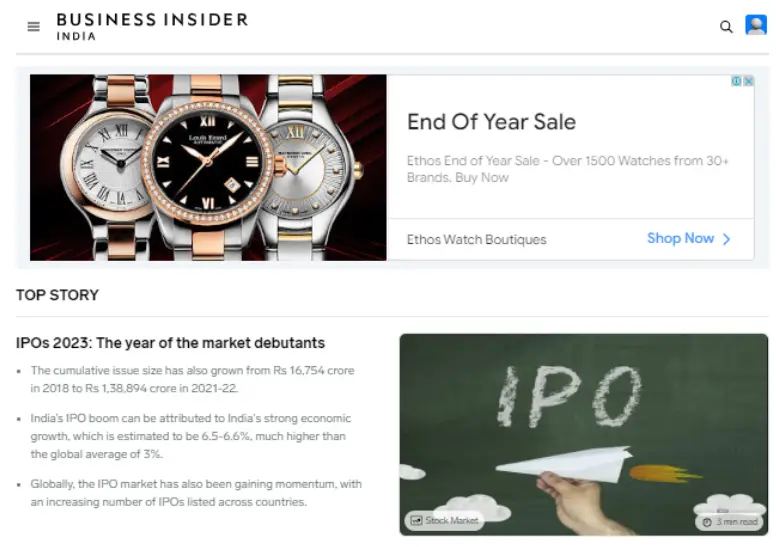
Programmatic has always been part of Business Insider as they focus more on private marketplaces and direct deals (programmatic guaranteed and preferred deals). In 2017, programmatic contributed 45% of the ad revenue of Business Insider, and after that, they grew the international ad revenue by 40% in 2019.
Last year, they earned a 71% YoY ad revenue with video ads, of which 45% of ad revenue came from direct deals. This way, the top content platform leverages every programmatic deal type year after year, allowing advertisers to target relevant users with its different content programs.
Spotify:
Spotify is a pioneer in programmatic audio advertising. When it launched audio ads in podcasts, it had driven 70% of the programmatic revenue from private marketplace deals, half of which are from rich first-party data and consumer listening patterns.
The digital audio platform registered that it is getting 20 to 25% of ad revenue from programmatic advertising in 2018, which is 18% in the previous year. In this way, Spotify explored its revenue opportunities in programmatic audio ads YoY. Today, its ad revenue stands at 287 billion dollars, which is only in the U.S.
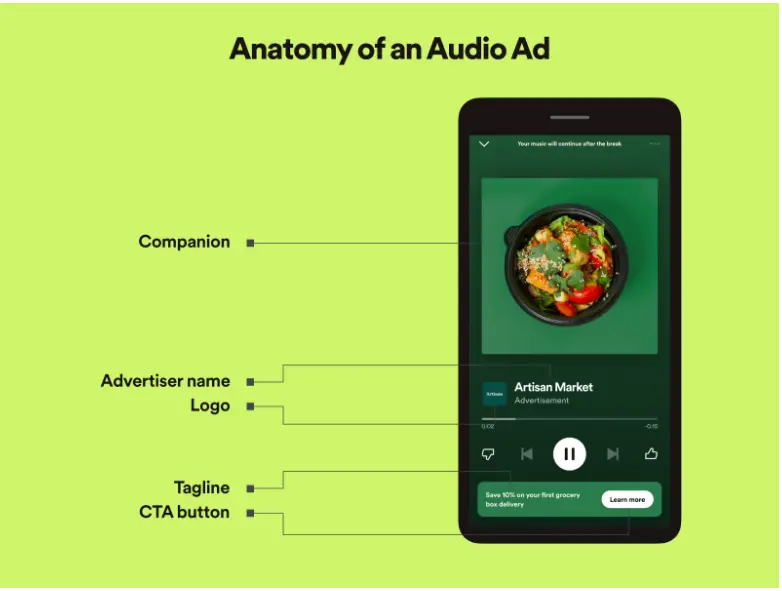
Source: Spotify’s audio ad specs
The Economist:
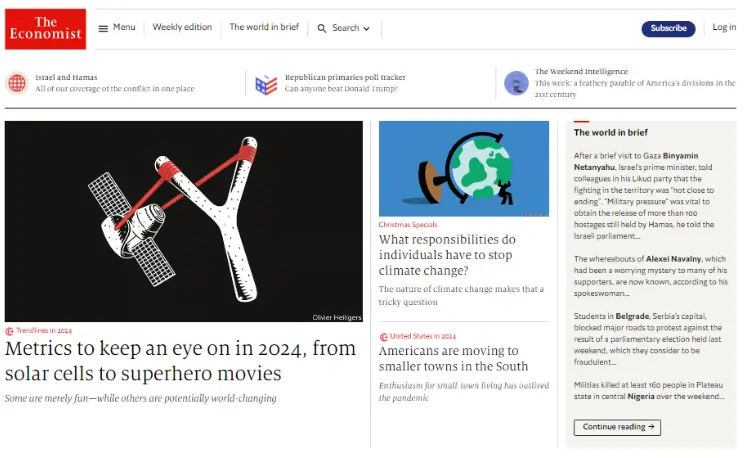
The renowned UK publisher utilized programmatic advertising to get new users and revitalize the stagnant subscription rate. They used a marketing strategy to show the content differently to several target audience segments. The goal was to intrigue users and then convert the lead to subscribers.
Within a week of starting the campaign, they covered 50% of the target and the remaining 50% in three weeks. Economics generated three crore re-targetable contacts and $15.6 billion in completed subscription and supplementary revenue.
How Much Does Programmatic Advertising Cost?
Cost-per-mille is the standard revenue model of programmatic, where publishers get paid based on impression. It varies for each publisher according to the relevant traffic, ad formats, niche, targeted devices, and placement.
Using CPM is profitable for publishers because they get paid based on impressions, not clicks. It is cheaper than social media revenue models and drives better value for publishers. This means even a small publisher can use this in their digital advertising process.
Bonus tips to get high CPM
- Generate valuable traffic with highly targeted first-party data.
- Set floor prices based on the historical data and check the benchmark against your competitors.
- Optimize ad layout and placement that drive better user experience.
- Set tiered floor prices for different ad formats and placements.
- Use automated tools to do dynamic floor pricing, which changes floor prices according to real-time market changes.
- Optimize ad units and placement for mobile.
- Use optimal ad density (no of ads in a page) that doesn’t hurt UX.
Emerging Trends: What’s Next in Programmatic Advertising?
Emerging cookie alternatives:
The programmatic world focuses on bringing potential cookie alternatives amid the cookie depreciation. Contextual advertising is not new but is rising due to cookie depreciation. Unified ID 2.0, the product of TradeDesk, has been launched with stronger privacy protocols. It is an open-source framework that gives transparent solutions to create user identities for targeting. And obviously, the Privacy Sandbox APIs are on the rise.
Artificial intelligence (AI) and machine learning (ML)
We will see an increase in the usage of AI and ML in various programmatic tasks, from ad optimization, dynamic ad flooring, and fraud detection to dynamic creative optimization. As per IAB, as usual, AI will be the hot topic in programmatics in 2024. AI-driven tools increase the effectiveness of targeting and measurements, ensuring marketers run good campaigns.
Omnichannel advertising
Omnichannel strategies are a big hit in programmatics now. Publishers are selling and managing ad inventory across devices such as desktop, mobile, and connected TV (CTV). The most popular among omnichannel advertising is CTV, which is estimated to grow 10.8% from 2023 to 2028.
Power Your Programmatic Journey With Us
Programmatic advertising is a significant milestone in adtech. It helps publishers reach their fullest potential with a suite of advantages: streamlined media buying, improved targeting abilities, data-driven decisions, addressable ads, multiple demands, increased ad viewability, and higher yield.
These benefits can be overwhelming, but they can be realized only when you know how to use them right. Programmatic implementation comes with technical complexities, and it is an ever-changing landscape that demands you to be on tip. It is quite hard for you to focus on ad monetization and publishing.
That is why the best foot forward you can take would be connecting with reliable monetization partners offering comprehensive advertising solutions to publishers.
They offer reliable services on ad management, demand management, and yield optimization. Connecting with them gives you the upper hand in technology, and you will get access to the platforms with high entry barriers, like Google Ad Manager and Google AdX.
Connect with the best from the rest today.
FAQs
1. How is programmatic advertising better than traditional advertising?
Programmatic advertising offers improved targeting, efficiency, and cost-effectiveness compared to traditional advertising. It enables real-time bidding, precise audience targeting, and automated ad buying.
2. Programmatic advertising Vs. Digital advertising, what’s the difference?
Programmatic advertising is a subset of digital advertising that automates the buying and selling of ad inventory using data and technology.


